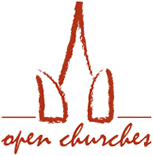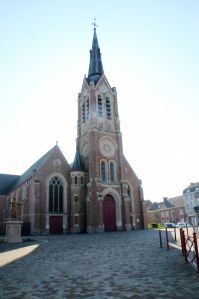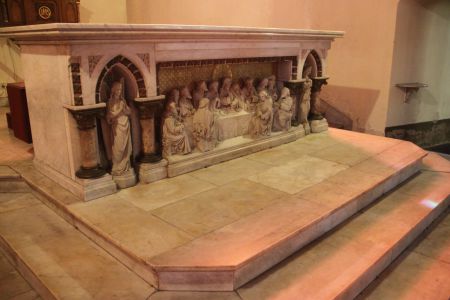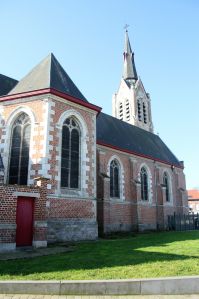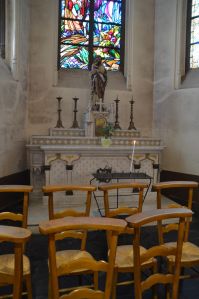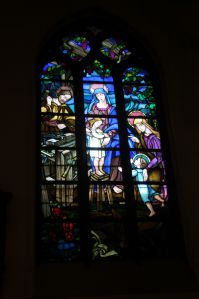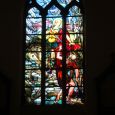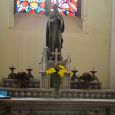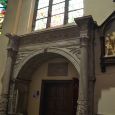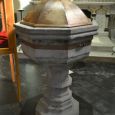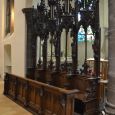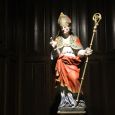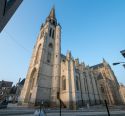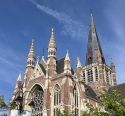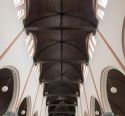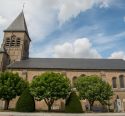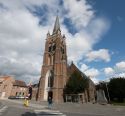Church | XVI | Gothic | Catholic Church





Map
Opening hours
01 January - 31 December
Mon 9.00 - 17.00
Tue 9.00 - 17.00
Wed 9.00 - 17.00
Thu 9.00 - 17.00
Fri 9.00 - 17.00
Sat 9.00 - 17.00
Sun 9.00 - 17.00
Description
A first church was built in the second half of the 15th century (1480) by Gilles Ghiselin, who died in 1514. This noble family strongly influenced the history of Bousbecque. Advisor and chamberlain of the duke of Boulogne, bailiff of the town of Ypres, he also built the castle of Bousbecque. The famous Ogier of Bousbecque was the son of Georges Ghiselin and Catherine Hespiel, and born in 1521/22.
From early times until the 19th century, Bousbecque was a prosperous town, due to the fabrication of linen canvas/cloth, and first producer of this commodity in France until the French Revolution. In the church two 13th century pieces of goldsmith work bear witness to this wealth; an altar cross in niello silver; and a casket of red copper, gilded and decorated with enamel from Limoges.
The church of St. Martin is a “hallekerque”, whose three naves are the same height. The five altars of the church were consecrated by the bishop of Tournai on 25th March 1516. The actual building in the Flemish Gothic style of brick and stone, was rebuilt under the direction of the architect Charles Maillard , who added its high, slate covered steeple, in 1874. Within can be found the columns of Artesian sandstone and Tournai stone, which separate the naves and support the vaults.
A mausoleum to the memory of his parents, built by Ogier Ghiselin of Bousbecque, can also be seen, with its monumental facade and carved columns, that has been preserved.
Photos
Remarkable elements
Les vitraux
- Ceux de la nef sont de Jacques Grüber, l’un des fondateurs de l’école de Nancy. A ce maître verrier et ébéniste, décédé le 15 décembre 1936, on doit la décoration des vases de Daum, la villa Majorelle, la grande verrière des Galeries Lafayette de Paris, ND de Lorette à Tilloloy...
- À son décès, J-Jacques Grüber, son fils, finit son œuvre et signe les derniers vitraux de la nef.
- Les 2 vitraux du chœur, aux magnifiques couleurs, sont signés de Mme Capronier-Turpin de Lille et datent de 1944/1945
Chapelle saint Antoine Le Grand ou l'Ermite
Saint Antoine fait l’objet d’une vénération particulière : on vient « servir » le Saint depuis toute la région et la Belgique flamande ,en vue de guérison de maladies de peau , en particulier , le zona.
Né vers 251, décédé vers 356 (105 ans!) dans la province romaine d’Égypte, Il est d’abord ermite-Anachorète avant de fonder un premier monastère prés de Gaza.
- Il est fêté le 17 Janvier
Dans la chapelle, il est représenté accompagné d’un cochon avec une clochette. En effet, depuis le XIVe siècle, les cochons appartenant à l’ordre religieux de Saint Antoine, les Antonins, portaient une clochette, les autorisant à divaguer librement dans les rues, ce qui était interdit aux autres cochons, à l’époque considérés animaux de compagnie !
- Il est également patron de la Légion étrangère.
Mausolée d'Ogier de Busbecq
- Classé « Monument Historique » en 1906
- Il contient le cœur d’Ogier enchâssé dans un écrin de plomb
- Édifié en 1559 sur les plans d’Ogier de Busbecq pour son père décédé en 1514 et sa mère décédée en 1541
- D’époque renaissance, il est certainement le plus remarquable de notre région
- Réalisé à l’antique en pierre blanche et noire ; sur ce mausolée, reposait le sarcophage d’un homme armé couché, sa femme auprès de lui.
Les Fonts Baptismaux
Le baptistaire date du 16° Siècle, construit en pierre de Tournai.
Il est déplacé récemment pour des raisons pratiques. Sa place liturgique traditionnelle est en effet à l’entrée de l’ Église, pour accueillir les nouveaux baptisés .
Mobilier néo-gothique
- Le chemin de croix en pierre blanche, béni le 2 Juin 1887, est de Mr Verlinden.
- Les confessionnaux, les stalles et la chaire de style gothique en chêne ainsi que les bénitiers, sont l’œuvre de Mr Deberdt de Bailleul (XIXe siècle siècle)
- Le jubé en chêne de Mr Leroy, a été offert par les Bousbecquois en 1848. Mis en place en 1857, il est aujourd'hui disparu,
- L’orgue de 1852, a été rénové par le facteur Bruggeman de Mouscron.
